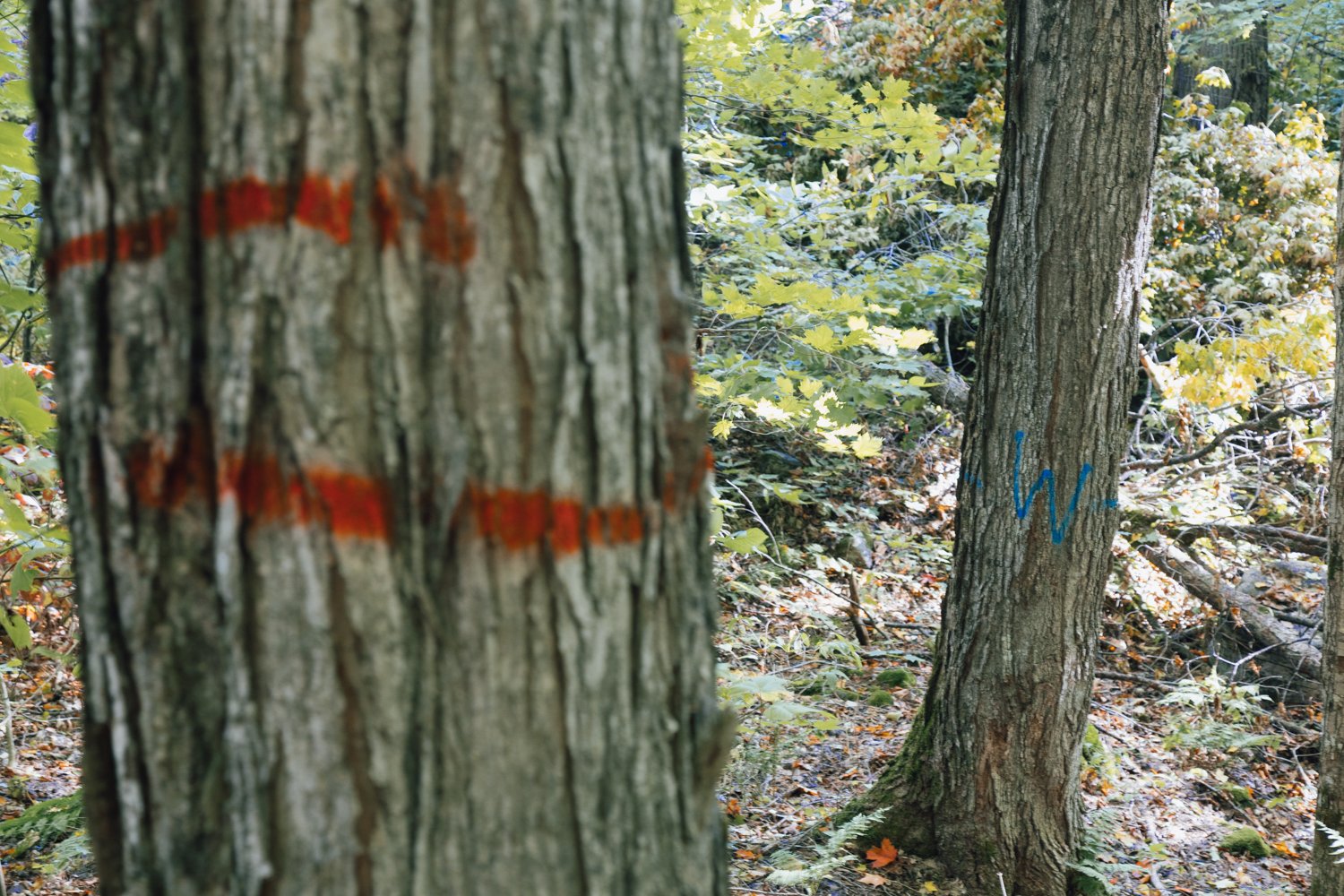
Forestry
Sustainability
During each harvest, we prioritize harvesting the worst trees first (to capture their value before they die), spacing the crowns of residual stems (to allow the residual trees to grow better), maintaining or enhancing diversity (to increase the resilience of the forest despite pests and inclement weather), and protecting wildlife habitat (to ensure the non-human residents of the forest can keep living there, too).
We also strive to earn our social license by communicating openly and frequently with community leaders and nearby stakeholders, sharing our private properties with the general public, and treating our employees, contractors, customers, suppliers, and everyone else with decency, respect, and fairness at all times.
“On the private lands of Haliburton Forest & Wild Life Reserve, and affiliated properties, we maintain a long-term commitment to forest management practices consistent with the Forest Stewardship Council principles and criteria as well as any related policies and standards. We are certified under the National Forest Stewardship Standard of Canada (FSC-STD-CAN-01-2018 V 1-0 EN) and we strive to implement our land ethic while earning our social license at all times.”
Harvesting Systems
The vast majority of our forestry operations utilize tree marking and partial harvest systems like single-tree selection. Tree marking is the act of inspecting each and every tree in the forest before making any decisions about which trees will be cut and which will be protected. Partial harvest systems entail cutting approximately 30% of the trees during each harvest, meaning that plenty of stems are retained to provide seed, shelter, and continued growth. With the use of these systems, harvests are able to re-occur every 20 years, with the volume, quality, and value of the timber typically improving with each successive harvest.
Stewardship Services
Through our Stewardship Services program, we offer a wide range of land management services to other landowners, including forest inventory, management plans, GIS and mapping, Managed Forest Tax Incentive Program enrollment, stakeholder engagement, road building, tree marking, and harvest supervision, as well as timber merchandising and marketing. Our goal withStewardship Services is to share our expertise with a wide range of landowners across the hardwoods of Ontario.
Our forestry professionals identify as hands-on forest managers, not consultants, and so our services are usually best suited for clients who own at least 100 acres and are interested in conducting active forest management with a long-term view to the sustainability of their property. With that said, even if you own less land or have other management objectives, please feel free to reach out; we will be happy to recommend another consultant who will be able to meet your needs.
Research Activities
We complement our forest management operations with in-house research activities which occur in partnership with research institutions like the University of Toronto, Queens University, Fleming College, Hocking College, and more. Over the course of 30 years, Haliburton Forest & Wild Life Reserve Ltd. has emerged as one of the most intensively studied forests in the world. Recent studies have assessed the population density of Eastern red-backed salamanders in recently harvested forests, the rate at which lake ice is changing due to climate change, and the age at which Hard maple trees reach financial maturity in the Algonquin Region of central Ontario – and much, much more.



